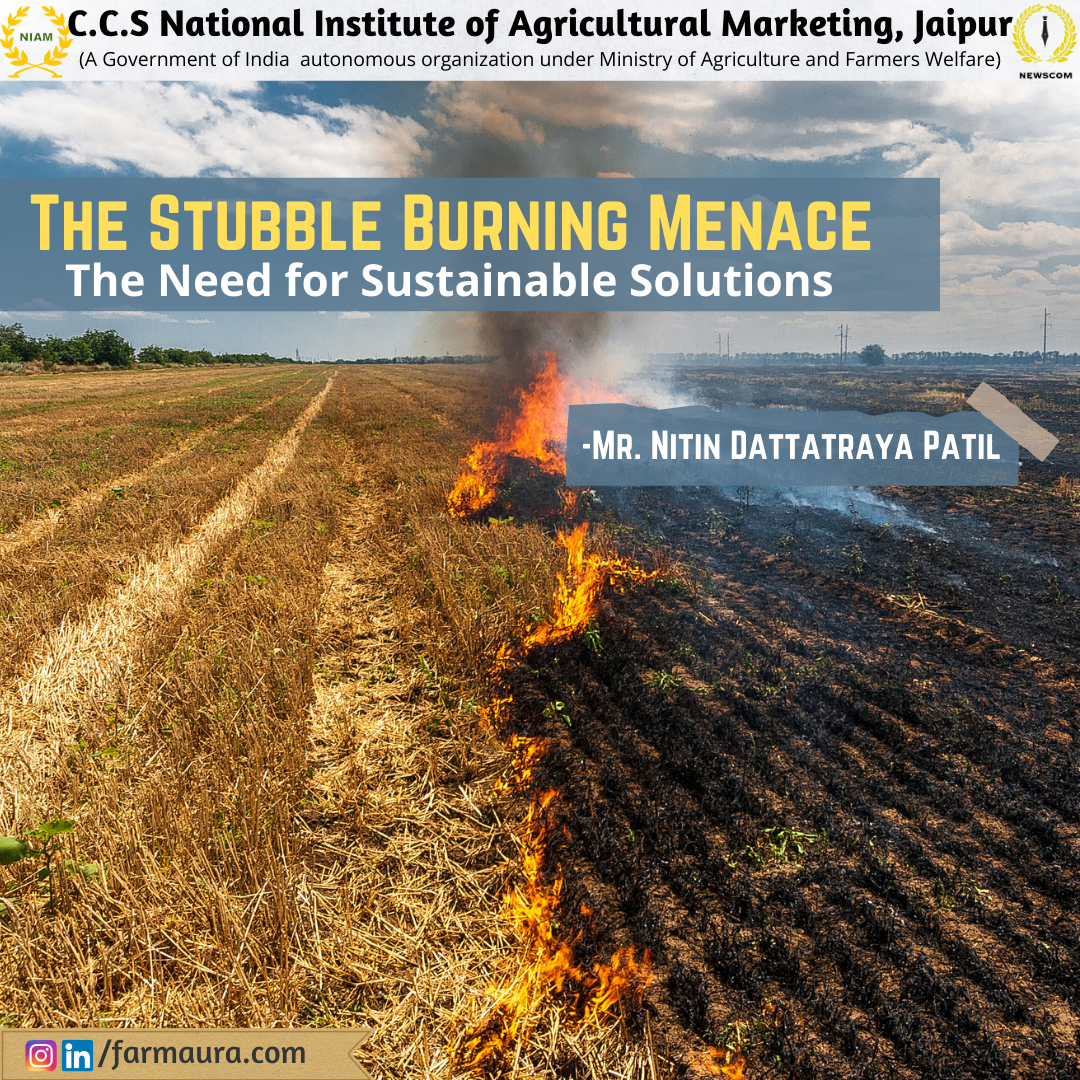Stubble (parali) burning is a method of removing rice crop remnants from the land to clear the land for sowing wheat from the final week of September to the end of November. The process of burning straw stubble that remains after the harvest of grains such as rice, wheat, etc. is known as stubble burning. It is typically necessary for regions where the agricultural residue is left behind after combination harvesting. One of the main factors contributing to air pollution and decreasing air quality in regions of north India is the burning of agricultural waste. Burning Stubble releases dangerous pollutants into the atmosphere, including volatile organic compounds, carcinogenic polycyclic aromatic hydrocarbons, methane (CH4), and carbon monoxide (CO) (VOC). These contaminants spread throughout the atmosphere, eventually generating a thick layer of smog that degrades the air and harms people’s health.
Burning of crop residue has historically occurred in Punjab, Haryana, and western Uttar Pradesh, but it is currently happening more regularly everywhere in the nation. Burning of wheat stubble is a relatively recent problem that began with mechanized harvesting utilizing combined harvesters. Farmers in the Ghazipur region of UP, particularly those in the Zamania and Chandauli areas, have been extensively burning wheat stubble during the past four to five years. In addition to wheat and paddy, sugarcane leaves are most commonly burnt. According to an official report, more than 500 million tonnes of parali (crop residues) are produced annually in the country, and cereal crops (rice, wheat, maize, and millets) account for 70 percent of the total crop residue.
The best, most environmentally friendly, and sustainable method is to physically harvest the paddy, which leaves no stubble for burning. Paddy residue is used as feed for animals, turning it into milk, animal power, and cow dung after hand harvesting and thrashing. A portion serves as wintertime animal bedding.
Other is the sowing of the short-maturity period, less water-intensive paddy variety in Northern states during the Kharif period which would increase the time interval between the harvesting of paddy and the sowing of wheat. Thus, providing more time for farmers to deal with paddy residue.
Indigenous solutions have been created to lessen stubble burning. The Pusa microorganism, created by the Indian Agricultural Research Institute, accelerates decomposition and turns stubble into compost in just 25 days, enhancing soil quality. The bio decomposer contributes to raising the fertility levels of the soil. This in turn immediately contributes to increasing the productivity of the land, which will help farmers produce better yields. The farmers can use the leftover stubble to cover their crops with manure and compost on their fields. As a result, they will have to buy less separate fertilizer for their crops. For the farmers, this will result in immediate savings.




